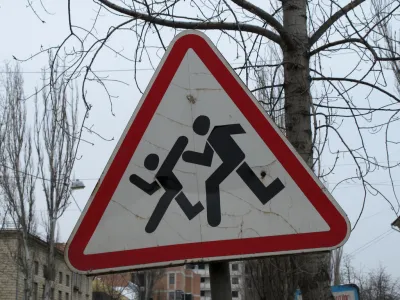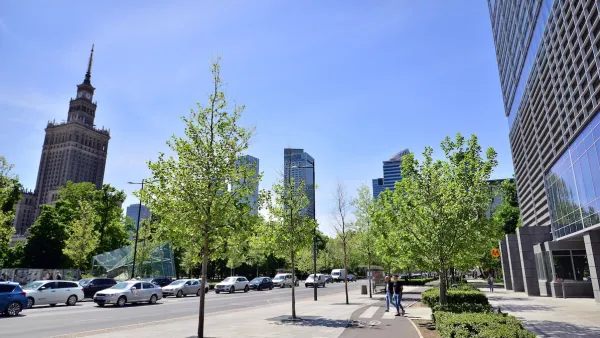A psychological experiment finds that warning signs depicting more movement gain more attention, making drivers navigate more carefully.

Further validating proponents of shared space and traffic calming, "researchers from the University of Michigan and Brigham Young University found that signs that conveyed a greater degree of motion—think a running stick-figure pedestrian, not a strolling one—may raise drivers' perception of risk, which may in turn translate to more caution and attention from behind the wheel."
Cari Romm reports on this study, which exposed subjects to signs of varying dynamism and rated their responses. According to one of the study's co-authors, "From evolutionary psychology we know that humans have developed systems to maximize the chances of detecting potential predators and other dangers. Thus, our attention system has evolved to detect actual movement automatically and quickly."
An opposing theory throws doubt on signs' importance. From the article: "There are others, though, who argue that focusing on the signs themselves—whatever they may depict—are the wrong way to cut down on traffic accidents, which kill around 34,000 people in the U.S. each year, because people may feel like they can rely on the signs and, as a result, don't need to be as aware of their surroundings."
FULL STORY: To Make Roads Safe, Make Them Feel Dangerous

Analysis: Cybertruck Fatality Rate Far Exceeds That of Ford Pinto
The Tesla Cybertruck was recalled seven times last year.

National Parks Layoffs Will Cause Communities to Lose Billions
Thousands of essential park workers were laid off this week, just before the busy spring break season.

Retro-silient?: America’s First “Eco-burb,” The Woodlands Turns 50
A master-planned community north of Houston offers lessons on green infrastructure and resilient design, but falls short of its founder’s lofty affordability and walkability goals.

Test News Post 1
This is a summary

Analysis: Cybertruck Fatality Rate Far Exceeds That of Ford Pinto
The Tesla Cybertruck was recalled seven times last year.

Test News Headline 46
Test for the image on the front page.
Urban Design for Planners 1: Software Tools
This six-course series explores essential urban design concepts using open source software and equips planners with the tools they need to participate fully in the urban design process.
Planning for Universal Design
Learn the tools for implementing Universal Design in planning regulations.
EMC Planning Group, Inc.
Planetizen
Planetizen
Mpact (formerly Rail~Volution)
Great Falls Development Authority, Inc.
HUDs Office of Policy Development and Research
NYU Wagner Graduate School of Public Service



























